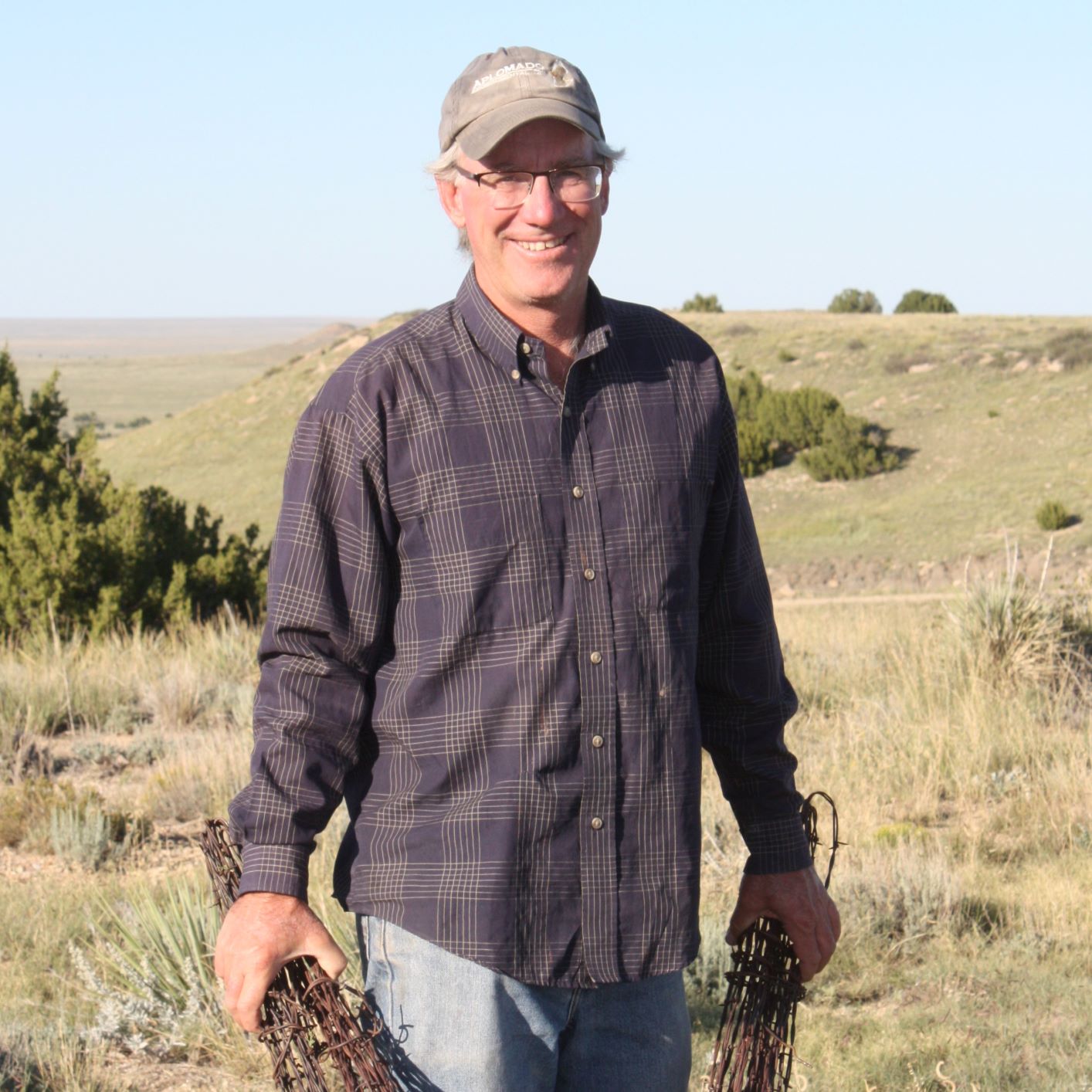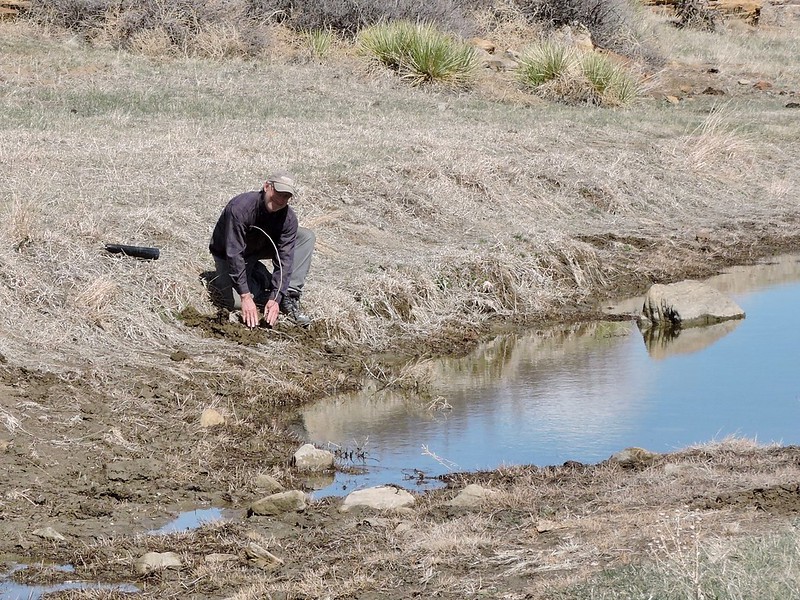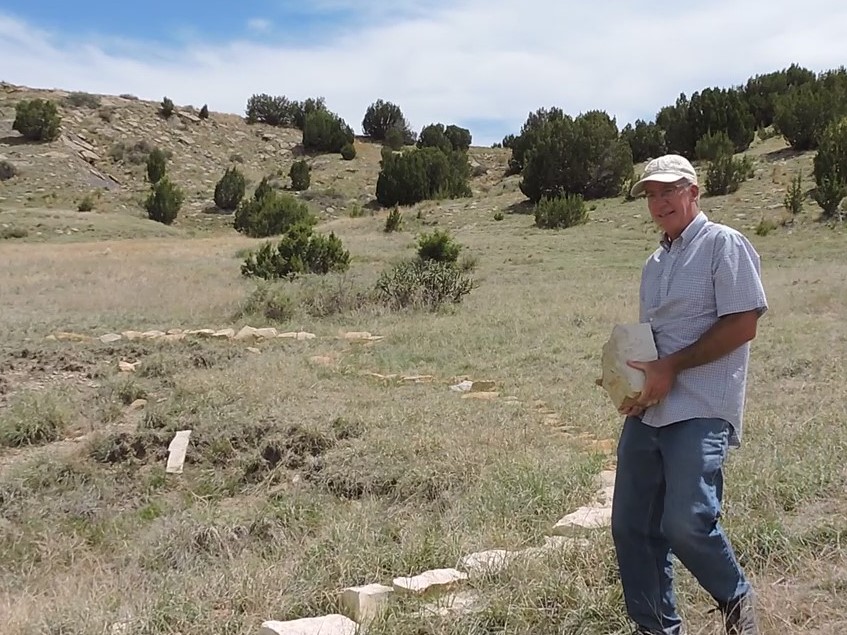
Jay Tutchton is the Preserve Manager for Southern Plains Land Trust.
The words spring and hope are often linked. For example, in our saying “hope springs eternal.” Nature’s season of rebirth and renewal can’t help but engender optimism. Here on the Southern Plains Land Trust’s nature preserves, spring drives us to plant trees. The hope, of course, is that we can recreate the riparian cottonwood groves and willow thickets noted by early travelers to our area, but which have been missing for the better part of a century as a result of constant livestock grazing. This year we planted 500 young willows and 100 cottonwoods (generously paid for by Defenders of Wildlife) at several dozen sites across Heartland Ranch and Raven’s Nest.
That sounds like a lot, but our success rate is relatively low. It is tough for a small tree on the prairie. Too much rain, and resulting flash floods, can wipe out a planting, while too little prevents survival. Browsing deer, elk, and even rabbits, are a constant threat to the foot-high saplings.

Jay plants a willow sapling at Medford Spring in hopes that in a few years, this spring will grow a lush cottonwood and willow grove.
Our young trees have to get lucky, and occasionally they do. For example, the West Spring on Heartland Ranch was devoid of cottonwoods or willows when we established this preserve in 2015. Now, after a couple years of plantings, there are a half-dozen young trees at this spring. Both cottonwoods and willows grow rapidly, so not far in the future, there will be a grove of trees here, validating our optimistic outlook.
Let’s hope for the best for this year’s round of saplings on our nature preserves.

Nicole Rosmarino, Executive Director, checks on young cottonwood trees that were planted in previous years at West Spring. If the trees are able to survive the first couple years, they quickly grow to provide cover for wildlife and nest sites for birds.
A related spring restoration task is our construction of “one-rock” dams. These are just what they sound like, small dams, one-rock high that we place in our ephemeral creeks to slow any rainwater that arrives and encourage it to drop its load of precious soil. That soil can then sustain riparian grasses, rushes, and sedges, which hold the soil in place, and it may become the site for a future tree planting. Southern Plains Land Trust is working with Volunteers for Outdoor Colorado, through a grant from the Colorado Water Conservation Board, to install dozens of these structures on Heartland Ranch and Raven’s Nest this year and next.

Jay placing the last rock on a one rock dam. This simple structure will prevent further erosion by slowing and spreading out water as it flows down this drainage.
Another saying comes to mind here, this one from civil rights activist Audre Lorde: “the master’s tools will never dismantle the master’s house.” I’ve always interpreted this to mean you can’t build a more just society simply by becoming a master and then acting like one. Rather, you must strive for a society with neither oppressor nor oppressed. While a bit out of context, I think Lorde’s wisdom applies well to our ecological restoration or rewilding efforts. We don’t seek to “master” nature with our small dams, but to let nature use its own tools to heal itself.
The analogy is a bit tighter than it might seem at first blush, as this year the principal source for the rocks to build our dams is an old stone wall that once served to confine livestock. We are literally disassembling a structure that once attempted to “master” nature, and repurposing those same rocks, impressively gathered by homesteaders, to heal our streams. The paradigm is shifting. Where the pioneers sought to control nature, and confine their animals, we are just giving nature a bit of a jump-start, and removing a barrier to the free movement of wildlife. There is something a bit poetic in that.

Recent Comments